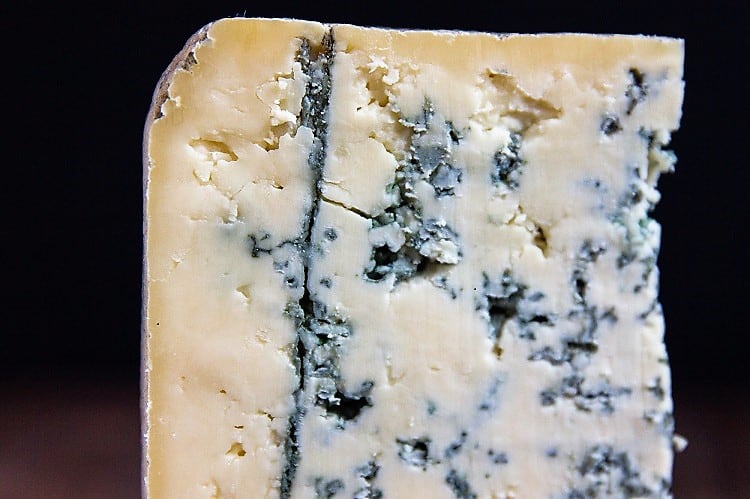
Why do some blue cheeses have pockets while others have streaks?
When it comes to blues, there are some slight variances that determine the texture, flavor, and, yes, even the style of veining. You may notice some cheeses have a more open structure, where blue molds like Penicillium roqueforti can thrive. These are called “pockets.” This occurs when the curd is hand-ladled and minimally cut to ensure that higher levels of moisture are retained for a creamier texture.
The high moisture levels in these blues mean they’re too delicate in structure to be pierced with needles. In general, the level of internal moisture of wet-rind blues provides more space (pockets) for the growth of wider streaks of blue mold, as opposed to long-reaching veins throughout the cheese. Case in point: a creamy Roquefort.
The thin streaks throughout a blue, however, occur more often in drier and denser cheeses. A prime example? Stilton. Also, blue cheeses with a natural rind may be aged longer before they’re pierced; this encourages oxygen flow, which in turn encourages mold growth throughout the cheese. The longer-aged blues contain less moisture when pierced, creating narrower highways for the salt and oxygen to comingle with the P. roqueforti or P. glaucum.





Oh this is great!
You’ve kicked up more questions in my brain…
what makes some blues “spicy”?
what makes some sweeter than others?
Is this all due to the magic of mold?
These are great questions! We’re going to send them off to an expert monger and get you an answer.